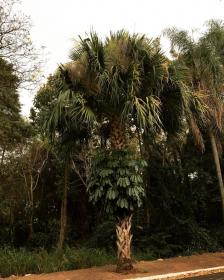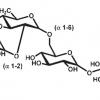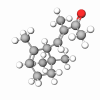Copernicia Cerifera is a plant that grows only in the northeastern regions of Brazil. Copernicia Cerifera Cera is a natural wax derived from Carnauba's leaves and leaf buds. The leaves are harvested, dried, and boiled in water, and the wax that floats to the top is skimmed and filtered.
Copernicia Cerifera Cera is composed of biodegradable lipids that show low toxicity. The chemical composition includes diesters 19-21%, hydroxylated acid esters 53-55%, free acids 3-3.5%, lactides 2-3%, alcohols 2-3%, resins 4-6%, and hydrocarbons 1.5-3%.
Compared to other waxes, Copernicia Cerifera Cera is significantly less dense, more elastic, and more resistant to deformation. It has favorable physical and chemical stability properties, good tolerability, and biodegradability, making it an excellent delivery and release system (liposomes) for oil-soluble active ingredients.
In advanced botanical and peptide-based complexes, Copernicia Cerifera Cera is used as a liposome-forming agent as it is easier to handle during the processing of the capsule. The small size of liposomes ensures close contact with the stratum corneum and can increase the amount of actives administered to the skin.









